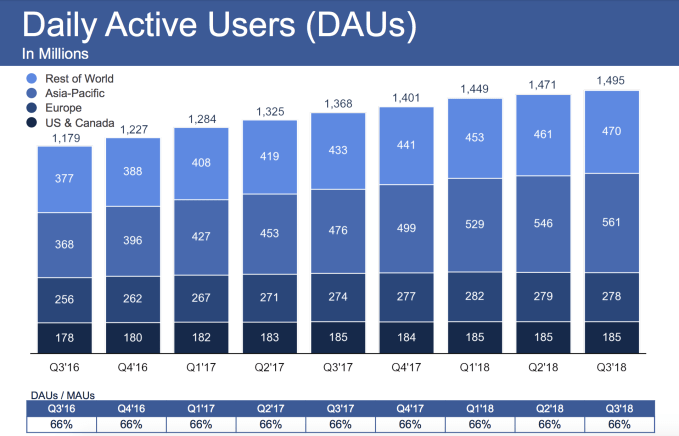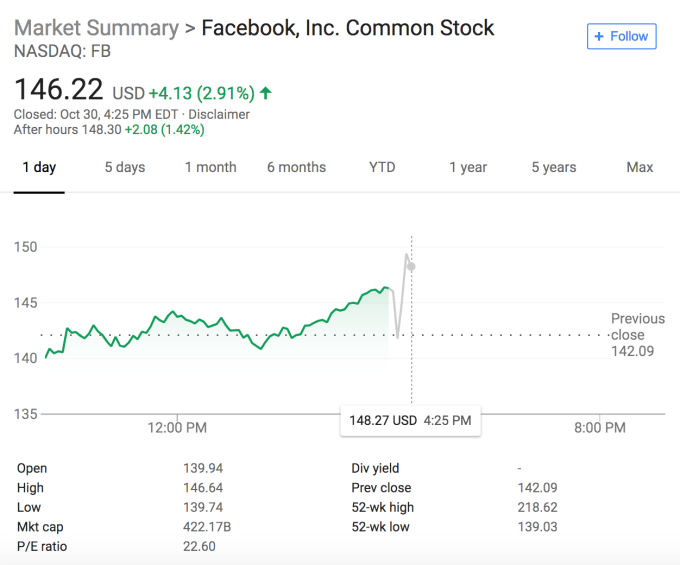After last quarter’s bloodbath earnings report that cut 20 percent from Facebook’s share price, the social network stumbled in Q3 2018, reaching 2.27 billion monthly users, up 1.79 percent compared to Q1’s slowest-ever growth rate of just 1.54 percent, compared to an 2.29 billion Wall Street estimate. Daily active users hit 1.49 billion, up 1.36 percent compared to Q1’s 1.44 percent, missing the 1.51 billion estimate.
But the real growth story depends on its core US/Canada and Europe markets where Facebook saw zero growth and lost 1 million users respectively last quarter. In Q3, Facebook added 1 million monthly users to reach 242 million in the US/Canada region, but held flat at 185 million dailies there. It lost 1 million users in Europe in both dailies and monthlies. Those markets make up over 70 percent of its revenue, which is scaring Wall Street.

As for Facebook’s business, the company earned $13.73 in revenue, compared to Refinitiv’s consensus estimate of $13.78 billion, and saw $1.76 EPS compared to an estimate of $1.47, making for a mixed report. Facebook blamed foreign exchange headwings for $159 million in Q3, which was the difference between its miss and a beat on revenue.
Facebook’s share price closed at $146.22 before earnings were released, still massively down from its $217 peak for before it announced user growth troubles and slowing revenue growth in Q2’s earnings report. Facebook shares climbed 2 percent upon the announcement of earnings, in part thanks to Facebook pulling in $5.14 billion in profit

Facebook hoped to show that its business can keep growing even as it spent massively to double its security and content moderation team from 10,000 to 20,000 this year. It did note that “more than 2.6 billion people now use Facebook, WhatsApp, Instagram, or Messenger each month, and more than 2 billionpeople use at least one of our Family of services every day on average.”
But the company’s revenues and profits have been overshadowed by the non-stop parade of scandals ranging from election interference to its biggest security breach ever. Next quarter we’ll see if the breach scared users away or if Facebook logging them out for safety led some to never log back in.
from TechCrunch https://ift.tt/2AAZXnX
via IFTTT
Comments
Post a Comment